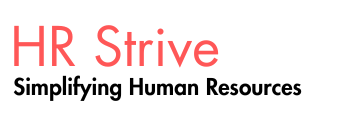Identifying Key Stakeholders for a Professional Network
An effective HR professional’s network must include a variety of important stakeholders, both within and outside the organization. These stakeholders play a critical role in shaping HR activities and determining the success of its initiatives.
The stakeholder theory suggests that organizations exist within a dynamic ecosystem of groups that influence—and are influenced by—the organization’s actions. Each group shares in the value created by the organization, and organizational goals are often shaped by the priorities of these different entities.
Each stakeholder group evaluates value differently. By understanding this diversity in perspective, HR professionals can better measure what success looks like, communicate effectively across audiences, and manage expectations strategically.
This concept was first introduced in the 1980s by R. Edward Freeman as an alternative to the traditional shareholder-centric model. While the shareholder theory focuses on maximizing profits for business owners, the stakeholder perspective acknowledges that an organization creates various forms of value—social, environmental, and economic—across its different relationships.
The Stakeholder Model
Organization Stakeholders:
-
Investors
-
Government agencies
-
Industry associations
-
Local communities
-
Political organizations
-
Vendors and suppliers
-
Customers
-
Employees
Each stakeholder group places value on different elements, depending on its interests and role.
Stakeholders in HR
HR’s stakeholders are wide-ranging and diverse:
-
External stakeholders include customers, investors, and donors. Customers evaluate value based on quality, convenience, and innovation. Investors may focus on financial performance or long-term sustainability. Donors—especially in the nonprofit sector—care about the efficient use of contributions. HR supports these outcomes by recruiting the right talent, building service capacity, and managing executive compensation appropriately.
-
Internal stakeholders include:
-
Senior leadership, who rely on HR for insights on talent capacity, cost management, workforce strategy, and compliance with labor laws.
-
Boards of directors, who look to HR for executive succession planning, ethical governance support, and competitive compensation design.
-
Functional managers, who depend on HR for workforce planning, performance support, and conflict resolution.
-
Employees, who seek transparency, fair pay, job safety, and career development opportunities. HR must tailor policies to meet the evolving needs of various employee segments—such as flexible work, inclusion, or opportunities to engage in socially impactful work.
-
-
Suppliers, including staffing firms and benefits vendors, expect stability, fairness, and open collaboration. Internal partners like IT and administration also play a role in supporting HR processes.
-
Community groups, political entities, religious organizations, and governments also act as stakeholders:
-
Communities value job creation and long-term partnerships.
-
Political groups aim to build alliances for regulatory or social change—HR can facilitate positive engagement in these efforts.
-
Faith-based organizations may seek workforce inclusion or support for charitable missions.
-
Governments require compliance with labor laws and often view businesses as key contributors to economic growth. HR ensures adherence to legal requirements and supports national goals like workforce upskilling or social inclusion.
-
Navigating Conflicting Stakeholder Needs
Aligning stakeholder expectations with business strategy is often a challenge. Organizations must determine how to:
-
Prioritize stakeholder demands.
-
Build consensus or compromise with conflicting interests.
-
Foster dialogue to improve mutual understanding.
In some cases, simply establishing open communication may help stakeholders and the organization understand each other's goals better, even if alignment is not immediately possible.
Stakeholder Perspectives in a Global Context
Stakeholder relationships can look very different depending on local culture:
-
In China, customers may expect preferential treatment when there is a personal relationship involved, while in Western cultures, such favoritism could cause dissatisfaction.
-
Suppliers in relationship-driven cultures may find requalification procedures offensive, while in transactional cultures, this is standard.
-
Employee expectations also vary: some may value housing assistance (e.g., blue-collar workers in China), while others prioritize tax-free perks or better work-life balance.
Cultural norms significantly shape how stakeholders view value, trust, and expectations—HR must adapt accordingly.
The Value of Internal and External Relationship Building
Whether you're networking, forming teams, or negotiating deals, relationship building is essential. HR professionals engage in a wide array of relationships:
-
External (with clients, partners, or vendors),
-
Internal (across departments and roles),
-
Vertical and lateral (from senior leadership to frontline staff).
Colleagues may work in the same building or at remote locations. In dispersed environments, HR must leverage digital tools—like video conferencing and collaboration platforms—to maintain meaningful interaction. Without informal moments (e.g., hallway chats), virtual connection requires intentional effort.
Benefits of Strong Professional Relationships
Well-maintained relationships offer many advantages:
-
Enhanced communication: Ensures people receive not only the right information but also broader insights and shared context.
-
Increased efficiency: Supports teamwork and smooth conflict resolution.
-
Improved workplace culture: Fosters trust, connection, and a sense of belonging.

No comments:
Post a Comment